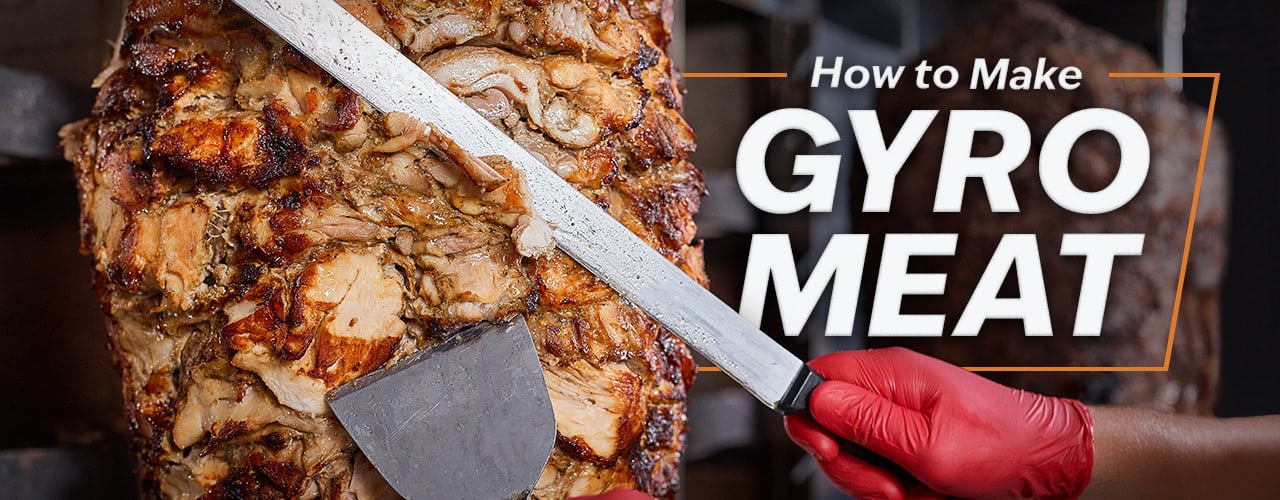
Gyros are a very popular Mediterranean dish that are easy for restaurants to make and serve. Vertical broilers make preparing gyros a simple task, as the sight and aroma of the cooking meat are a perfect way to boost impulse sales in businesses like concession stands. Gyros are also becoming an increasingly popular bar food, as a large number of great beer pairings make gyros an excellent addition to a bar menu.
Utilizing a vertical broiler may seem complicated at first, but it’s easy to integrate into your restaurant operations. Just about any type of restaurant can have staff quickly learn how to use a vertical broiler and add gyros to their menu. Below, we’ll cover how to use a vertical broiler to make gyros, as well as other important information such as the different types of Mediterranean dishes you can use a vertical broiler to make.
Shop All Vertical BroilersWhat Is a Vertical Broiler?
Vertical broilers are cooking equipment most commonly used to create gyros, shwarmas, and doner kebabs. The meat is cooked on the vertical broiler in the shape of a “meat cone”, and it is sliced off during the cooking process. The equipment cooks the outer layer of the meat, allowing it to be easily cut off piece by piece from the spit.
Vertical Broiler Safety
Since vertical broilers keep the internal layers of the meat raw during the cooking process, failing to follow proper food safety guidelines could result in foodborne illness. Ensure that the sliced-off meat is cooked to the required internal temperature and that it remains outside of the temperature danger zone. For food safety purposes, the vertical broiler should remain spinning until all layers of meat have been fully cooked. If there is any leftover meat when the vertical broiler stops spinning, the meat should be discarded.
How to Use a Vertical Broiler
-
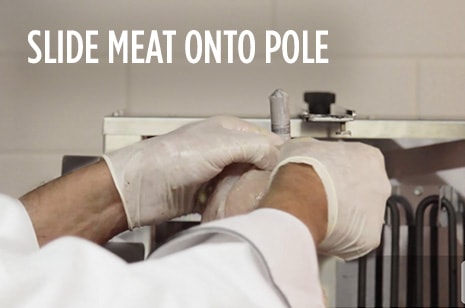 1.
1.Slide your choice of meat onto the pole.
-
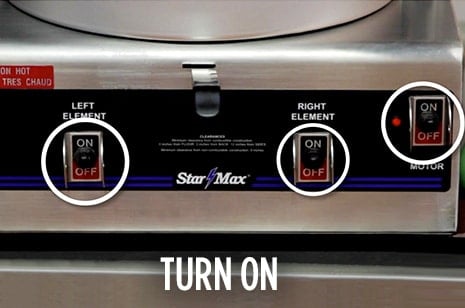 2.
2.Turn on your gyro machine. Make sure to turn on both the left and right heating elements, as well as the motor, so your meat doesn't burn.
-
 3.
3.Allow your meat to cook until it reaches a safe internal temperature and the outside is crispy.
-
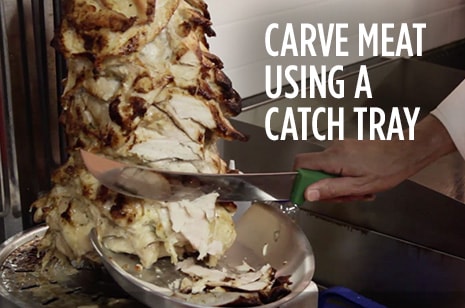 4.
4.Carve meat off the pole and catch it with a catch tray.
-
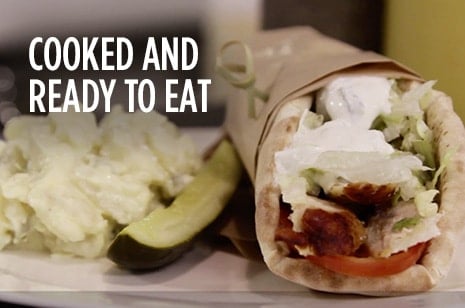 5.
5.Assemble your sandwich or pita, and you're ready to serve.
How to Use a Vertical Broiler Video
To learn more about vertical broilers, check out the video below:
Gyro vs Shawarma vs Doner
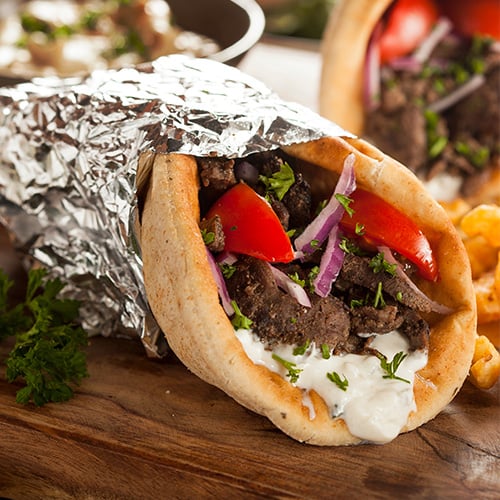
Depending on where you are in the world or who you ask, the name of this dish varies slightly. The dish originated in ancient Turkey, and it was called "doner," which comes from the Turkish word for "to rotate." The sandwich later spread to Greece, which at the time was part of the Ottoman Empire. In Greece, they translated the name to "gyros," which means "to turn." The dish found its way to the Arabic world, where they translated the name to "shawarma."
While gyros and shawarma originated from doner, today there are some regional differences in how the sandwiches are made and presented. While these differences may be small, they are enough to differentiate each type as its own distinct dish. Below, we've broken down each type of sandwich:
- Doner Kebab - Doner kebab is made with roasted meat that is stuffed into a pita or a piece of thin flatbread. The sandwich also usually contains tomatoes, lettuce, cabbage, onions, pickled cucumbers, and various sauces. In terms of spices, doner kebab is often seasoned with oregano, cumin, and isot pepper.
- Gyros - Gyros start with an oiled pita to which you add thinly sliced meat, tomatoes, onions, and tzatziki sauce. These sandwiches are also often seasoned with spices such as thyme, rosemary, and majoram. Some gyro shops will also add fries to the sandwich.
- Shawarma - Unlike doner or gyros, shawarma can be served on a plate and not in a sandwich or wrap. The plate contains sliced meat, and it is typically served with bread, fattoush salad, tabbouleh, tomato, and cucumber, as well as tahini sauce or hummus. Shawarma is usually topped off with spices such as cardamom, tumeric, and cloves to bring out extra flavor.
What Type of Meat Do You Use in Gyros, Doner, and Shawarma?
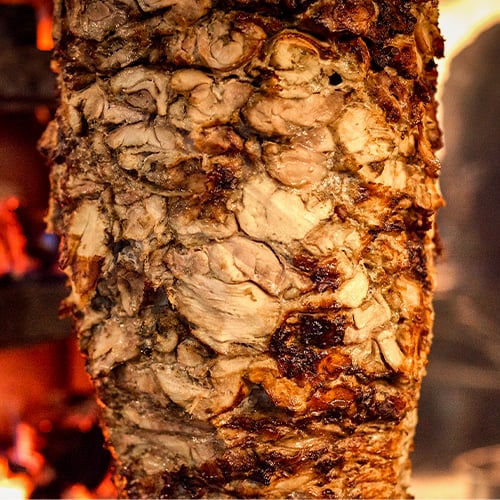
Not only are gyros, doner, and shawarma assembled differently, they can be made with various kinds of meat. The versatility gives you the potential to add several different types of Mediterranean dishes to your menu. Below, we've listed the main types of meat traditionally used for each sandwich:
- Doner Kebab - Traditional doner is made with layers of seasoned lamb, chicken, or beef.
- Shawarma - Shawarma is typically made with lamb or chicken, but you can also use beef, turkey, or veal.
- Traditional Greek-Style Gyros - The original Greek-style gyros are made with thinly sliced cuts of pork or chicken.
- Greek-American-Style Gyros - The original recipe brought over by Greek immigrants has changed dramatically over the years. Gyros that Americans are most familiar with are made with a mixture of ground lamb, ground beef, and spices. The mixture is then formed into a cone and roasted on the vertical broiler.
Whether you’re starting a food truck or opening up a restaurant, gyro sandwiches are a great option to add to your menu. Not only is gyro meat delicious, but utilizing a vertical broiler is simple, making gyros easy to integrate into your menu. Adding gyros to your menu is a great way to expand your offerings and boost sales. With their simplicity and cost-effectiveness, using vertical broilers to make Mediterranean dishes is a fantastic option for a variety of businesses in the food service industry.









